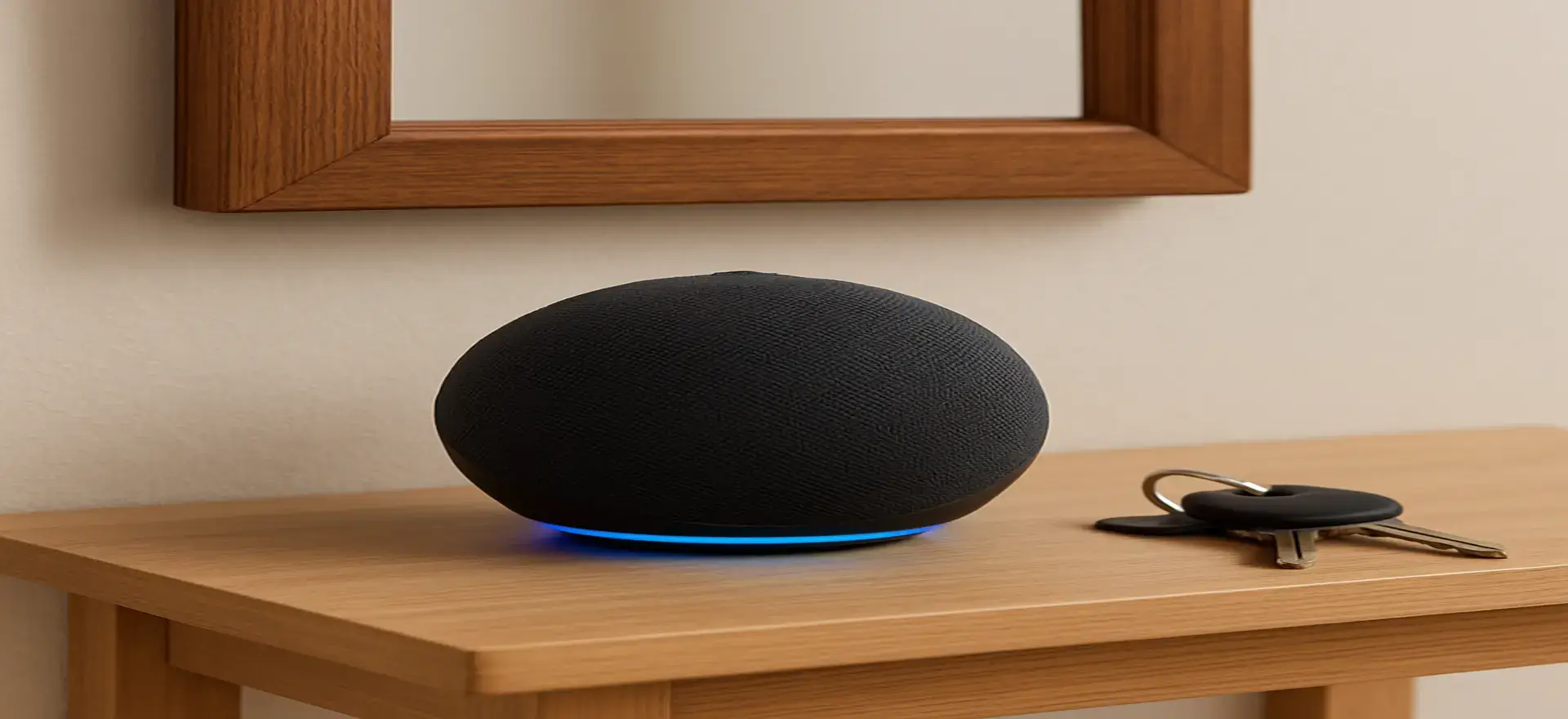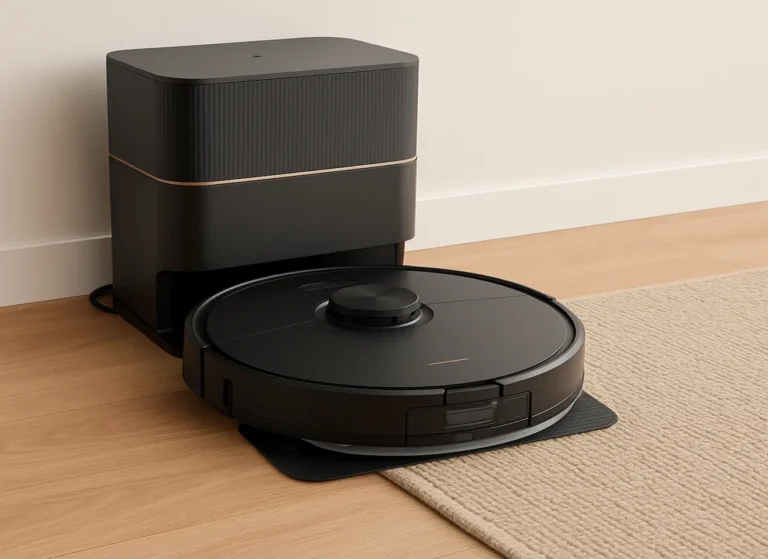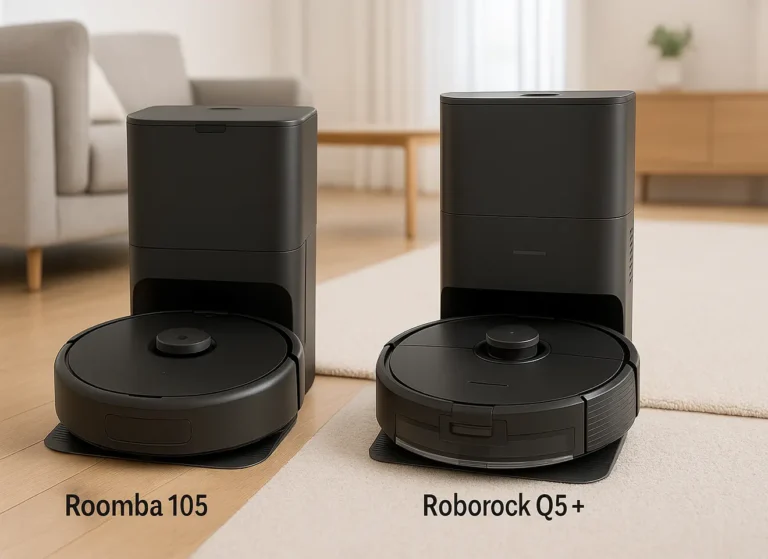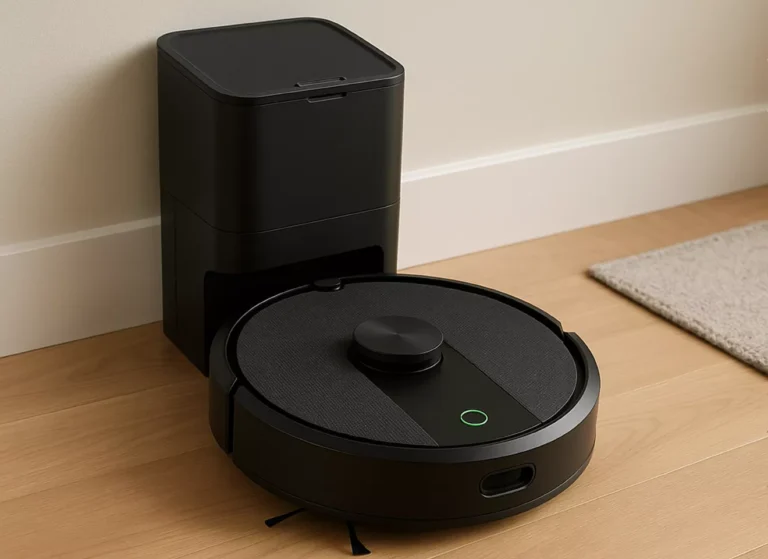amazon echo dot: the ideal gadget for renters (2025)
The Echo Dot (5th Gen) is the fastest, cheapest way for renters to add voice control, routines, and genuinely useful automations—no holes in the wall, no landlord drama. Setup takes minutes, the sound is clearly better than older Dots, and the built-in sensors unlock small quality-of-life wins across a rental.


This image has been generated using AI for illustrative purposes only and does not represent an actual product image.
What Makes the Echo Dot Perfect for Renters
Rentals punish permanence. Anything that leaves a mark can turn into a deposit dispute, which is why renters need gear that sits on a shelf, peels off cleanly, and moves with you without tools. The Echo Dot checks those boxes. Place it on a nightstand or bookcase, plug it in, connect to Wi-Fi, and you’re ready to control lights, plugs, fans, and more with your voice or simple automations. Because nothing here is fixed to the property, your setup can be packed in minutes on move-out day.
The Dot also plays nicely with renter-friendly accessories—adhesive light switches, battery doorbells, cable clips, and plug-in hubs. In practice, it becomes the small “brain” that ties your apartment together: one device to set the mood, run bedtime routines, and handle the little chores you forget when you’re rushing out the door. Used this way, it fits neatly into a broader smart home for renters plan.
Day-One Wins: What You Can Automate Immediately
Lighting without rewiring. Two smart bulbs in the living area, one by the bed. Say “Goodnight” and everything dims to warm, low brightness.
Appliances on a schedule. A smart plug for the coffee maker or a fan; routines can shut them off when everyone leaves.
Quick information. Hands-free timers, alarms, weather, traffic, and reminders that hit your phone and the speaker.
Apartment messaging. Announcements to roommates (“Food’s here”), intercom-style drop-ins between rooms, or a quick broadcast to say you’re on the way.
None of this requires drilling or permanent adhesive. If you want to go further, add a battery video doorbell at the entry and a compact camera at an interior choke point so packages and comings-and-goings are covered without touching the building’s wiring.
Setup in a Rental (No Drills, No Landlord Headaches)
Setup is simple: unbox, power on, open the Alexa app, and follow the prompts. Place the Dot on a stable surface away from edges (bass can make it wobble on slick finishes). To keep things tidy, route the power cord behind furniture with removable clips; you can also tuck excess cable in a small fabric sleeve so nothing dangles.
Wi-Fi tips for renters:
Name devices clearly (“Sofa Lamp,” “Bedroom Fan”) so voice commands feel natural.
2.4 GHz for reach. In older buildings with thick walls, 2.4 GHz often works better than 5 GHz for plugs and bulbs.
One account, multiple rooms. If roommates share devices, create clear room names and use Household profiles so permissions and voice recognition behave.
If your apartment’s breaker box is temperamental, add a small UPS to the router. When power blips, the Dot and Wi-Fi come back faster and your routines don’t fail at midnight.
Sound, Mics, and Everyday Voice Control
Audio is a meaningful step up from older Dots—cleaner mids for podcasts, more body at low volume, and enough brightness to cut through ambient noise in a kitchen or studio. Far-field mics pick up wake words reliably even with water running or a vent fan on. For background music, news, and white noise, it’s “good enough” in small spaces; for party-level volume or a big living room, pair it via Bluetooth to powered speakers.
Independent hands-on coverage has also noted the stronger audio and responsiveness, which tracks with our experience (independent hands-on coverage). The point isn’t hi-fi; it’s frictionless control and reliable hearing so your scenes trigger the first time you ask.
Voice Routines That Actually Help
Goodnight: turn off lamps on smart plugs, set bedroom bulbs to 1% warm, start a 30-minute white-noise routine.
Heading Out: power down non-essentials, lower a smart thermostat if allowed, arm a renter-friendly alarm kit.
Cooking: set a 10-minute timer, read ingredients, keep a hands-free shopping list.
Study/Focus: cue a low music scene, mute notifications, nudge desk lamp to cool white for an hour.
These micro-automations remove friction in a rental where you can’t rewire switches or install in-wall keypads.
Smart-Home Integrations That Matter in Rentals
The Dot ties together the renter staples:
Lighting: Philips Hue A19 bulbs give you flexible scenes without touching the switch plates. A wireless dimmer mounted with adhesive keeps landlords happy.
Outlets: TP-Link Kasa HS103 plugs turn dumb lamps and fans into controllable devices.
Entry: A battery doorbell mounted with a no-drill bracket provides alerts and two-way talk.
Cleaning: A slim robot vacuum runs while you’re out and returns to its base under a side table.
Presence-based routines can flip everything to “away” when the last phone leaves; geofencing back on arrival resets lamps and temperature before you reach the door. For context on how the Dot fits into a starter kit, see our roundup of top smart devices for renters


This image has been generated using AI for illustrative purposes only and does not represent an actual product image.
Living with Roommates (and Boundaries)
Renting rarely means living alone. Household profiles help Alexa recognize different voices, so timers and messages don’t get mixed. You can also:
Use Guest Connect so visitors can play music without touching your accounts.
Lock down purchases and skills that need permission.
Create shared lists (groceries, chores) people can add to by voice.
Announce quietly by setting the Dot’s volume on a schedule so morning alerts don’t wake everyone.
If privacy is a concern, place smart speakers away from doors and windows to avoid capturing hallway noise. Use the physical mic-mute button whenever you want a hard guarantee nothing is being processed.
Privacy & Safety Basics
Amazon’s privacy controls have matured: there’s a button to physically cut the mics, a voice-history log you can review or auto-delete, and granular skill permissions in the app. Best practices for renters:
Auto-delete voice recordings every 3 or 18 months.
Review skills quarterly and revoke anything you don’t use.
Label sensitive routines (“Door Lock,” “Alarm Away”) so you know exactly what each one does.
Avoid public Wi-Fi. If you must use a building’s shared network, isolate devices on a separate router.
Price & Value in 2025
As of 2025, typical street pricing floats between $30–$60 depending on seasonal promos. In that band, the Dot delivers more “daily use” value than almost any other smart-home purchase for renters: it coordinates devices you can actually keep when you move, and it smooths the repetitive moments of the day.
When to buy:
Major shopping events (Prime-style sales, Black Friday/Cyber Monday) are the best windows; bundles with bulbs or plugs often undercut solo pricing.
Refurbished units can be fine for a bedroom or office, but verify return policy and firmware updates.
Used marketplace units are hit-or-miss; factory resets and speaker wear vary—check in person.
If you’re deciding between a Dot and a larger smart speaker, think about room size, background noise, and whether you already own powered speakers. The Dot’s job is brains first, speaker second.
Who Should—and Shouldn’t—Buy This
Buy it if…
You’re in a studio or one-bed and want reliable voice control without rewiring anything.
You’re new to smart homes and need a central routine engine to coordinate simple gear.
You want portable automation that packs in a moving box and re-appears in a new place in an afternoon.
Skip it—or pair it—if…
You want big living-room sound from one box; pair a Dot to powered speakers or step up to a larger model.
You need local-only control across the board; some accessories still depend on cloud skills.
You live in a layout with heavy Wi-Fi congestion; consider upgrading the router before blaming the Dot.
Real-World Scenarios (Expanded)
Studio: The Dot controls two Hue bulbs and two Kasa plugs. A single routine sets a “work” scene at 10 a.m. (cool white, desk lamp on) and a “reset” scene at 7 p.m. (warm white, overhead off, fan on low). Late at night, a whisper-level volume setting keeps timers audible without waking neighbors.
One-Bedroom: Add a second Dot in the bedroom for hands-free alarms and white noise. The living-room Dot triggers a robot vacuum at 2 p.m. on weekdays and pauses when someone says “Stop Cleaning.” Presence routines set everything to low power when both phones leave the geofence.
Roommates: A shared shopping list and a “Quiet Hours” routine (no loud announcements after 10 p.m.) keep the peace. Announcements about deliveries play only on the kitchen Dot so bedrooms stay calm


This image has been generated using AI for illustrative purposes only and does not represent an actual product image.
Troubleshooting & Small Wins
False wake words? Move the Dot a foot away from reflective walls; soft surfaces reduce echoes that confuse mics.
Routines not firing? Check the routine’s device ownership—if a roommate removed a plug from their account, Alexa can’t see it.
Spotty Wi-Fi? Put the Dot on 2.4 GHz and force the router to use non-overlapping channels (1, 6, or 11).
Bluetooth stutter? Keep the Dot and speaker within the same room and away from microwaves or thick concrete.
Downsides to Know (Told Straight)
There’s no 3.5 mm audio jack on this generation, so wired speakers require workarounds; Bluetooth is the intended path. The temperature and motion sensors are useful but not as accurate or fast as dedicated sensors; they’re good for “nudge the fan on” or “trigger a nightlight,” not for full-blown climate control. These trade-offs line up with observations from third-party testing (third-party testing).
Verdict for Renters
If you rent and want more comfort for the least effort, start here. The Echo Dot (5th Gen) is a small, reliable coordinator for lights, plugs, and scenes that you can set up in minutes and remove in seconds on move-out day. Add bulbs and plugs first; layer in a doorbell, a compact camera, and a robot vacuum as your budget allows. Used thoughtfully, it becomes a quiet backbone for daily life in a rental—and it carries over cleanly to your next place as part of a broader smart home for renters setup.
Frequently Asked Questions
Is the Echo Dot (5th Gen) good for renters?
Yes—no drilling, just a power outlet. It sits on a shelf and controls lights, plugs, and more with voice. If you’re planning your whole setup, think of it as the “brain” of a renter-friendly starter kit.
Do I need a separate hub to start?
Not necessarily. Many bulbs and plugs work over Wi-Fi or Bluetooth; the Dot simply makes them easier to control and schedule. A dedicated bridge (e.g., for Hue) is optional for more advanced scenes.
What’s improved vs. the 4th-gen Dot?
Fuller sound at low volume, faster responses for timers and common tasks, and useful ambient sensors—handy in small apartments.
How do privacy controls work?
Use the physical mic-mute button, auto-delete voice history, and review skill permissions in the app. Place the speaker away from doors/windows to minimize hallway pickup.
Will it work if my internet goes down?
Most voice features need Wi-Fi. Some Bluetooth control may still work locally with paired devices, but expect limited functionality offline.
Related posts:
- What Nobody Tells You About the Kasa HS103: Renter Review (2025) What Nobody Tells You About the Kasa HS103: Renter Review...
- Philips Hue A19 Review for Renters (2025): Still Worth the Hype? Philips Hue A19 Review for Renters (2025): Still Worth the...
- Amazon Echo Hub: The Smartest Way to Control Your Smart Home? Amazon Echo Hub: The Smartest Way to Control Your Smart...
- Amazon Echo Show 5 (3rd Gen) Review: Better Sound, Same Compact Charm Amazon Echo Show 5 (3rd Gen) Review: Better Sound, Same...





